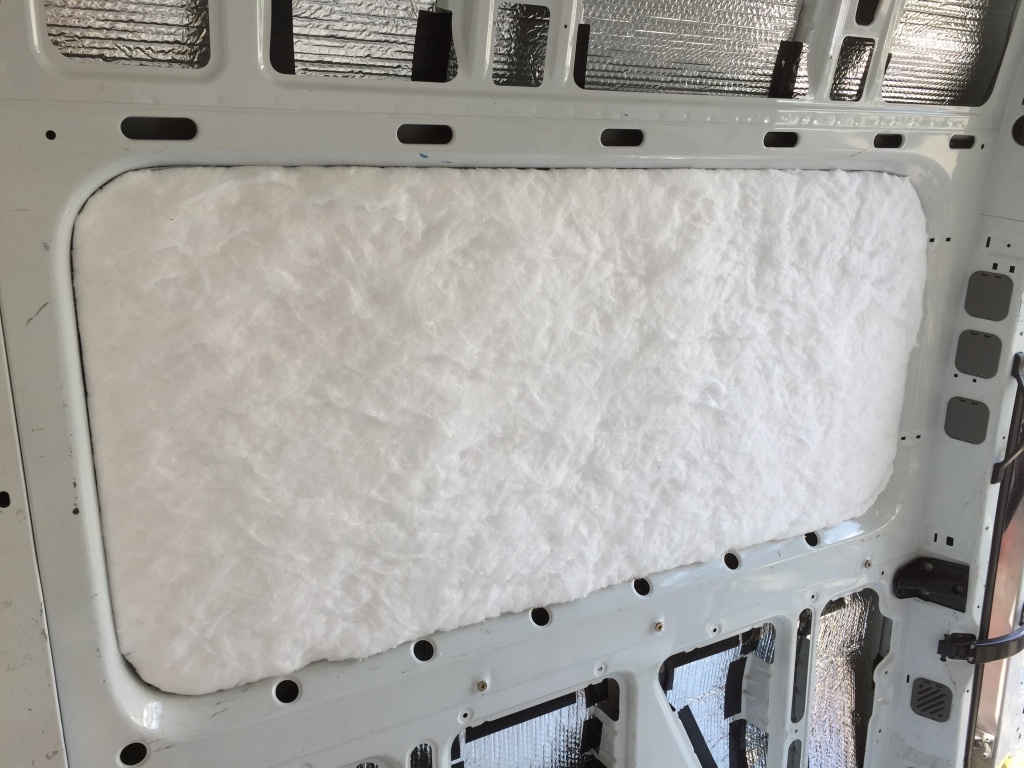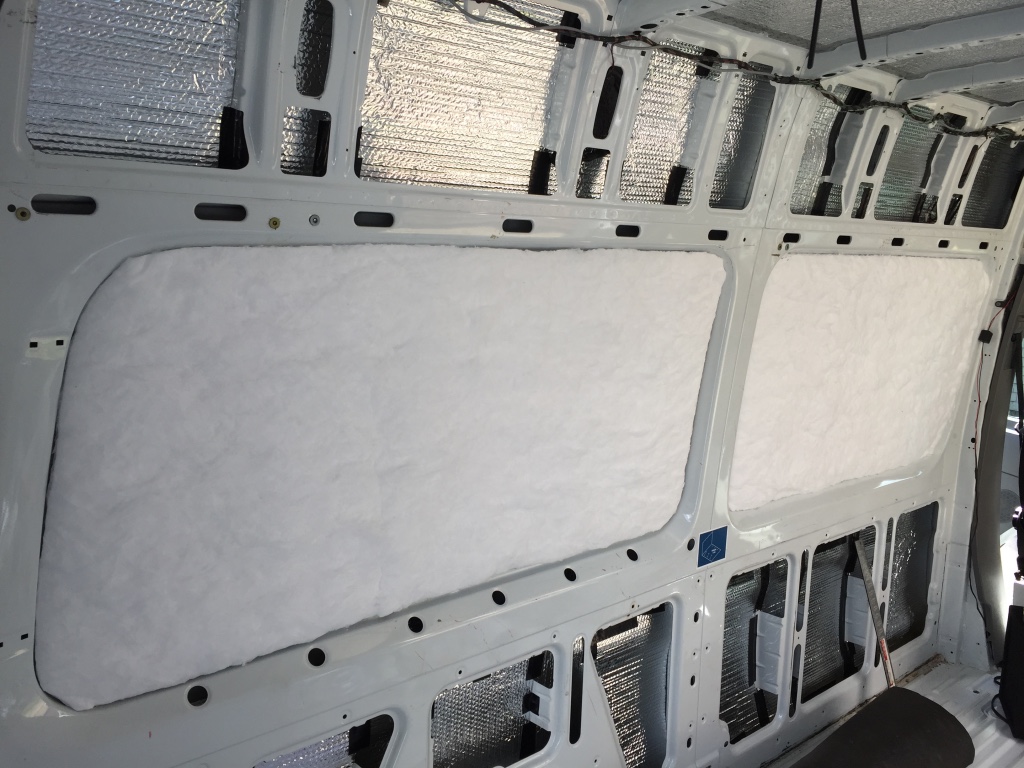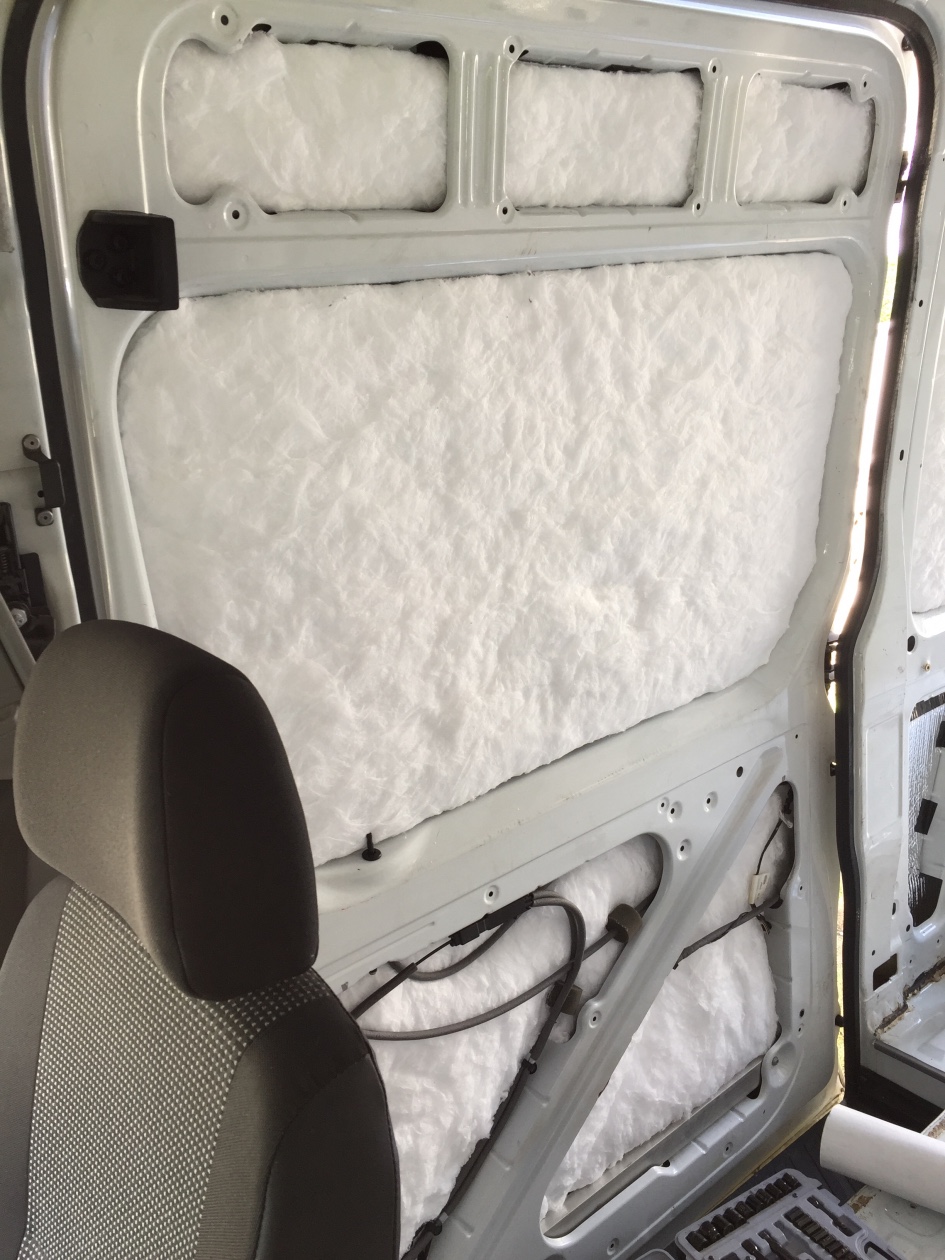Insulating a metal box is not a trivial task. It seems that everyone in the van community has their own theory and despite a plethora of options, there is no clear winner. Fiberglass is highly toxic. Spray foam is permanent and difficult to install. Cotton batts absorb water. And foam boards squeak like a thousand horny crickets! In the end I chose 3M Thinsulate SM600L as my bulk insulation. It’s non-toxic, easy to cut with scissors, and provides some sound isolation as a bonus. The only downside is that it doesn’t have a very high R value, meaning it’s not as good at retaining heat as say, fiberglass. But hey, at least it doesn’t squeak! That would probably drive me off a cliff in a matter of days.
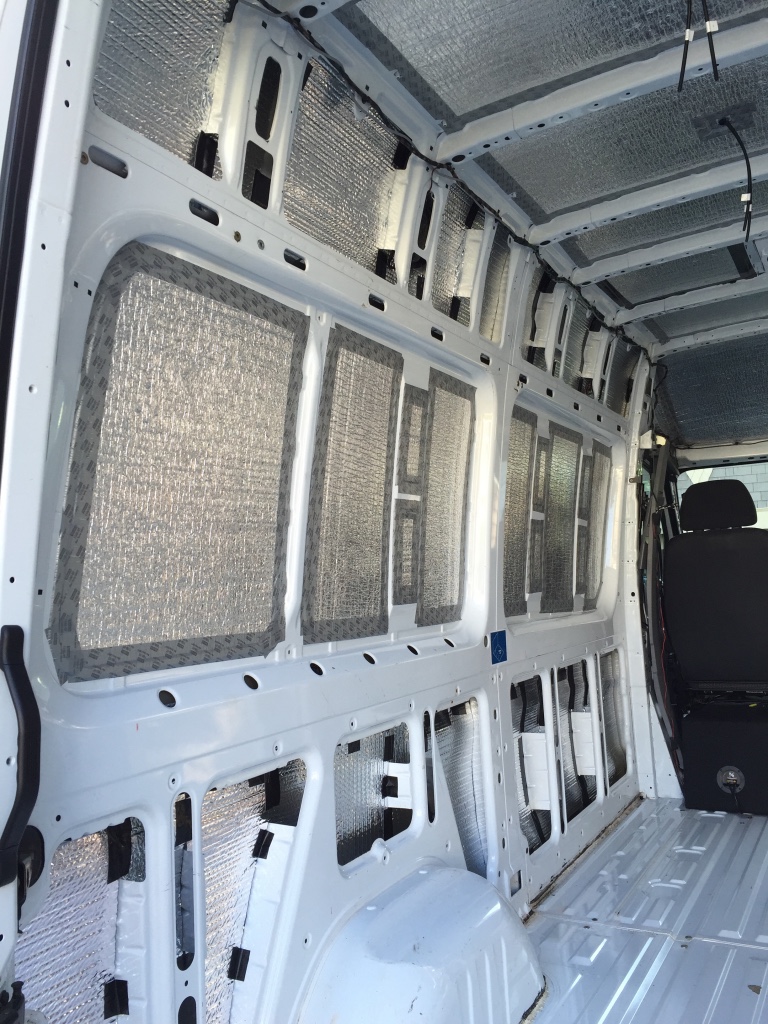
Most people install a radiant heat barrier as a first line of defense against the sun. I followed suit and chose the ever-popular Reflectix to mount under the Thinsulate. EZ Cool is another fine option. This is the shiny stuff you often see in people’s front windshield when they leave their car in the parking lot. Essentially it’s a mirror which blocks solar radiation. I secured the Reflectix to the van using a high temperature duct tape. When I ran out of that, I resorted to Gorilla Tape. Both are rated to 200F, but the duct tape is less expensive and easier to cut. I’ve seen a number of people paste the Reflectix straight onto the walls using a spray adhesive, but this decreases the usefulness of the material. Reflectix works best with a 3/4″ air gap. I couldn’t provide such a gap, but at least I decreased the surface contact of the material with the metal walls. Reflectix is also metallic and does conduct heat, albeit poorly.
I tried to cover as much of the interior of the van as possible, which took several days of tedious cutting and taping. The floor I’ll handle separately.
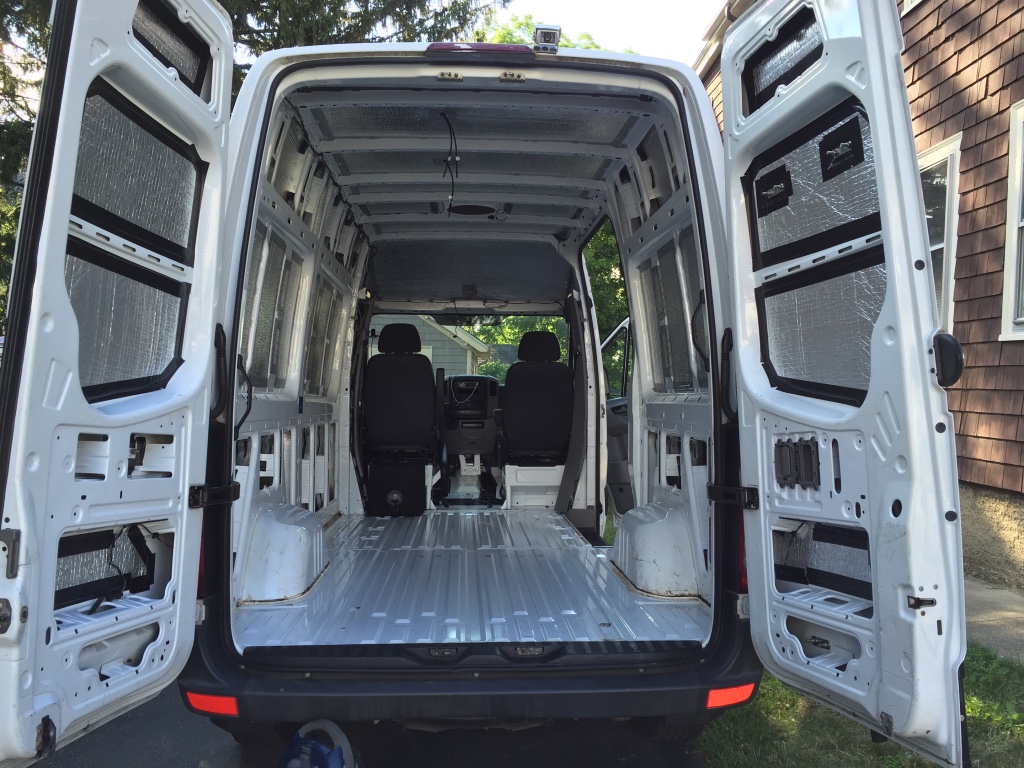
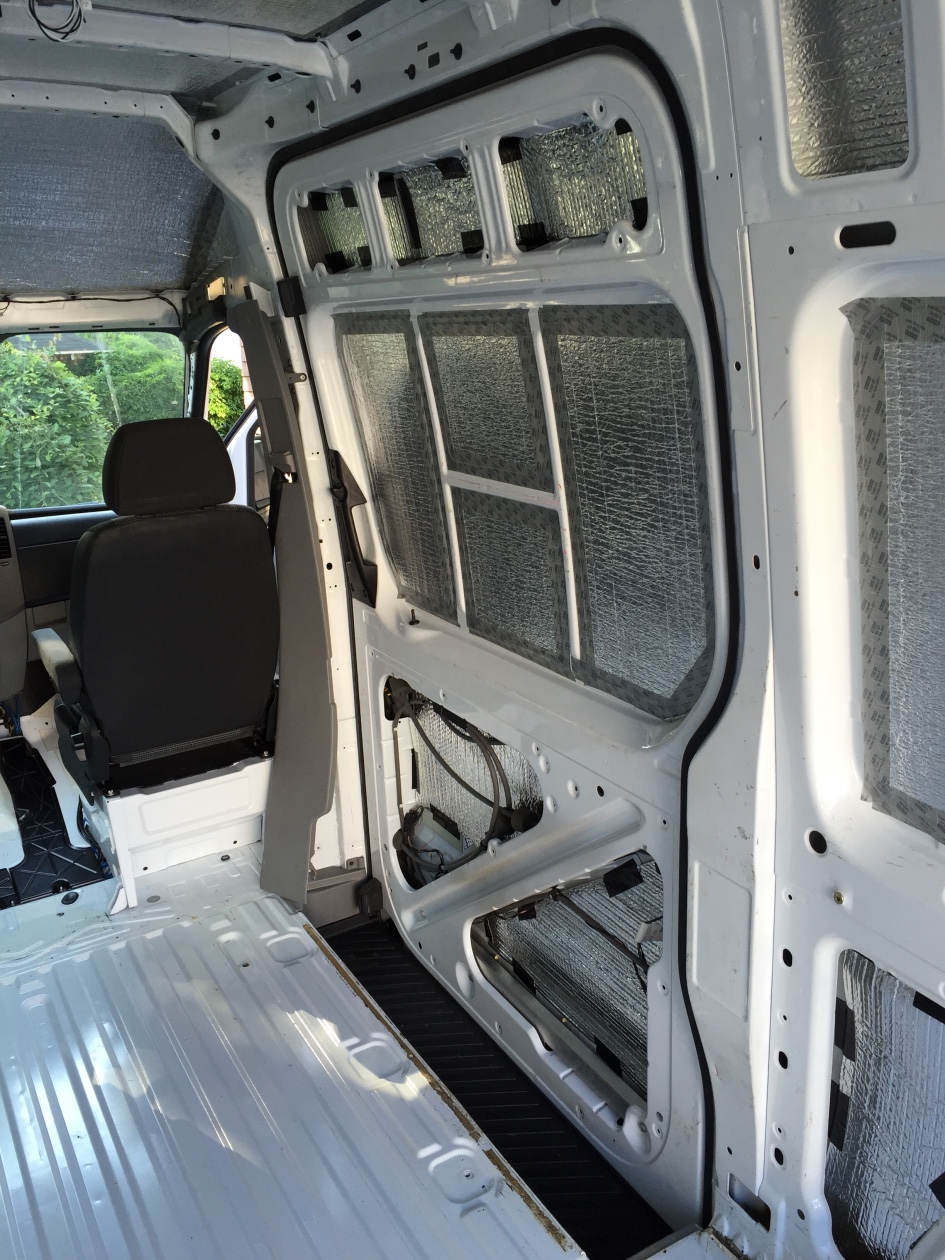
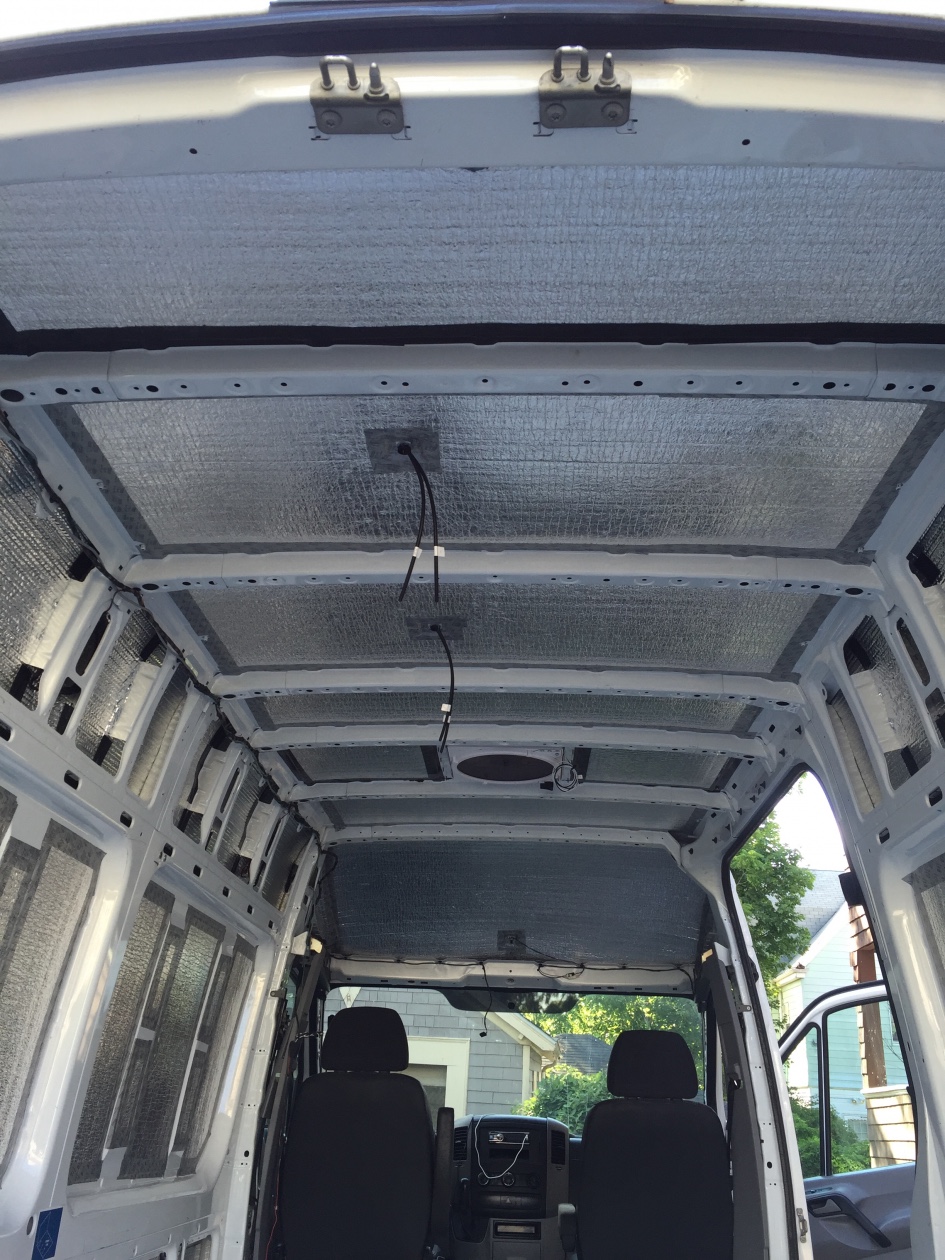
The next step was to install the Thinsulate, which went up much faster than the Reflectix. I used 3M Spray Adhesive secure the Thinsulate. Looks like pillows. Ooo pillows! Oh god, I need to sleep more.
